Cauvery crisis: Notes from the ground

Monday’s violence in Bangalore over the sharing of Cauvery water shook many. Our newsroom in Noida, Uttar Pradesh, was no different.
By evening, I was informed that my editors were keen I parachute into the state. Having made it in time for the last flight of the day, I landed in India's tech city early on Tuesday.
A drive from the airport to the city revealed some signs of normalcy – taxis were available, traffic moved normally, trucks and smaller vehicles could be seen ferrying goods at those hours.
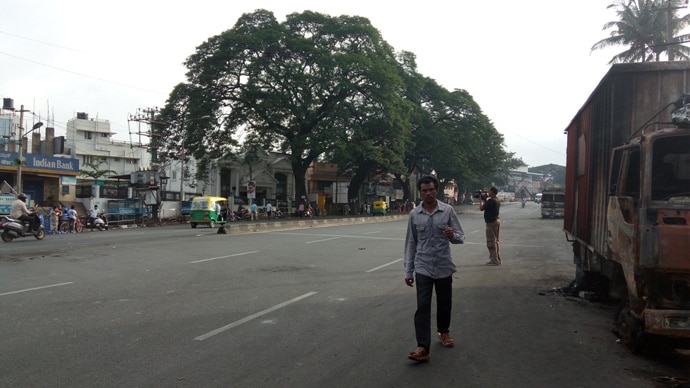 |
| Tuesday morning, the streets of Bangalore. (Photo credit: Jugal R Purohit) |
Once in the hotel, I decided to take a quick nap as the day was going to be a long one.
Within two hours, it was time to hit the ground.
I was accompanied by Shivamurthy Gurumath, a humble and resourceful colleague, who is our channel’s cameraperson from the city. We decided to straight away venture into the heart of the trouble by traveling on the worst-affected Bangalore-Mysuru road.
As stated, Bangalore has already begun limping back to normalcy and what I had seen in the morning only confirmed it.
People, I could see, were walking out of their homes, purchasing milk, talking to neighbours, waiting at bus stops, these said much more about "normalcy" than sound bites of administrators. I saw a lot of it that morning, whether at Bapuji Nagar where people on their scooters were seeking fuel or at the Galianjaneya temple, where shopkeepers, seeing the temple open its doors to devotees, were opening their own shutters.
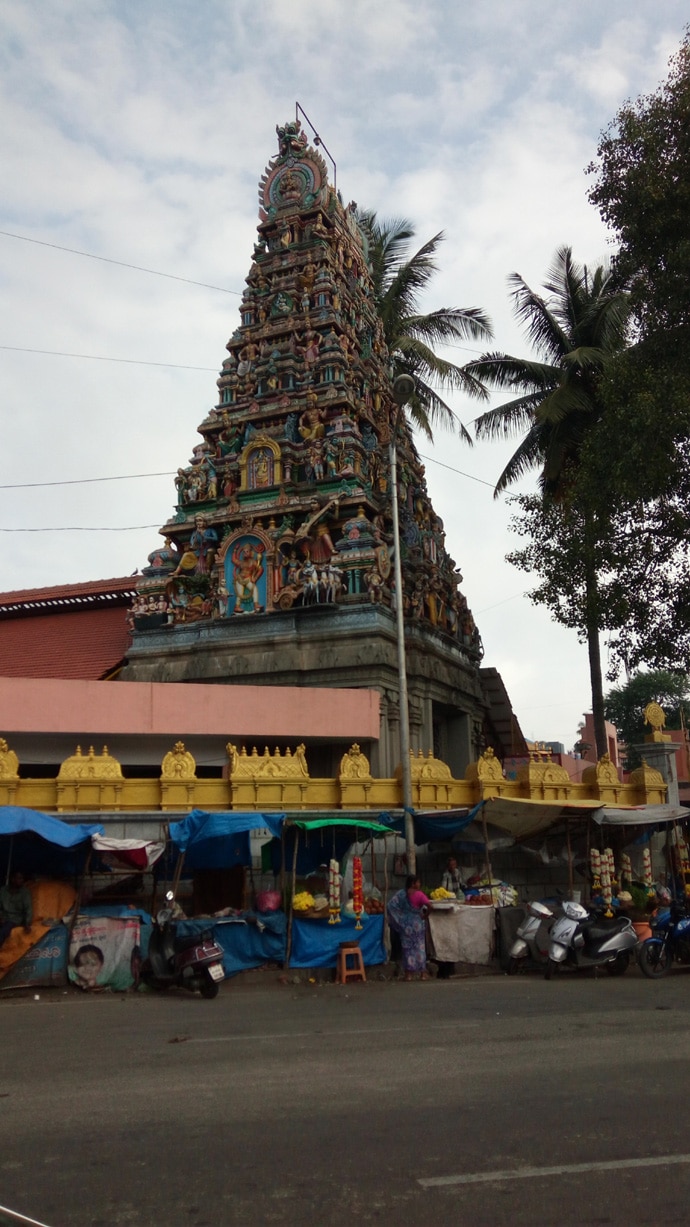 |
| Temple in Bangalore opened up, seeing that many shopkeepers too went back to work. (Photo credit: Jugal R Purohit) |
Unfortunately, the road bore testimony to the chaos that had followed, with sights of burnt and broken buses, trucks and vehicles. We ended our journey at the KPN Depot, which had become a symbol of the breakdown of India’s IT hub.
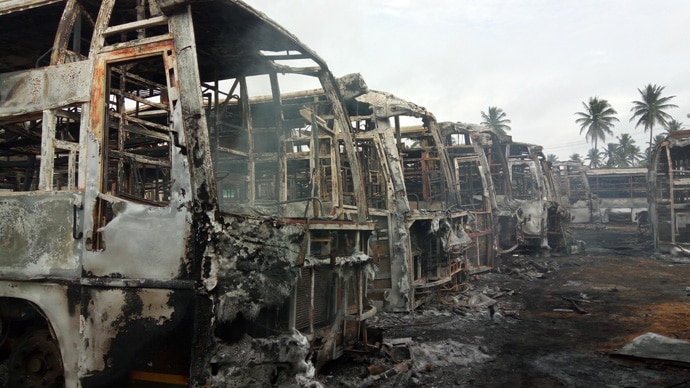 |
| KPN Depot. (Photo credit: Jugal R Purohit) |
Here, 35 buses were charred by a mob in a place which had residences all around.
How the mob walked in, set fire to so many vehicles and walked out without being questioned baffles me.
 |
| Another click of KPN Depot. (Photo credit: Jugal R Purohit) |
My day was spent covering the cabinet meeting at the state’s beautiful assembly complex, the Vidhan Soudha. Once done, I did some spot reports before ending the day at a restaurant for a quiet meal. Given the damage I’d seen in the past 24 hours, I had imagined this would not have been possible. But normalcy was restored much faster.
 |
| Vidhan Soudha. (Photo credit: Jugal R Purohit) |
Next day, I decided to venture out to ground zero – the farms and the farmers where the lack of Cauvery water was generating unrest.
We entered the Tamil heartland and proceeded to make a pit stop at the picturesque Biligundulu, a small hamlet along the bank of the river. It is not too far from the touristy Hogenakkal. Why? To document a "high pressure" job that seven men were performing using a few instruments and a boat, a job that has been so intrinsic to this dispute.
 |
| Biligundulu. (Photo credit: Jugal R Purohit) |
We crossed the mighty Mettur dam, which sadly also had little water.
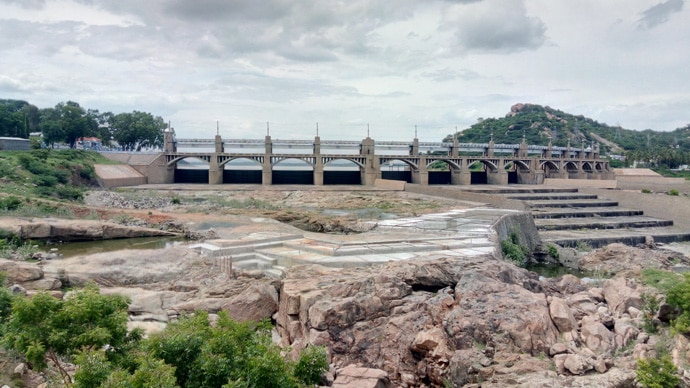 |
| Mettur Dam. (Photo credit: Jugal R Purohit) |
Tamil Nadu is for now aggregating the 12,000 cusecs of Cauvery river water released every day by Karnataka as directed by the Supreme Court. In addition, the North East monsoon which caters to nearly 50 per cent of the water requirement of this region (Karnataka included) is expected to set in by next month.
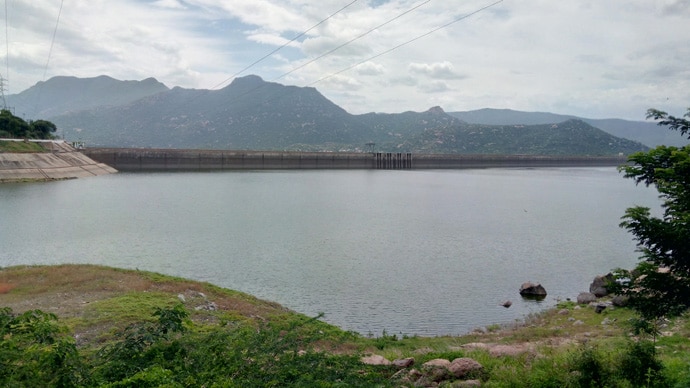 |
| Mettur Dam sadly had very little water. (Photo credit: Jugal R Purohit) |
Our journey took us to Tamil Nadu’s Bhavani, where farmers rely heavily on the Cauvery.
 |
| A farmer in Tamil Nadu's Bhavani. (Photo credit: Jugal R Purohit) |
The discourse in Karnataka would make you believe that they had ended up "losing" and Tamil Nadu had "won". But that was far from the reality. Farmers were equally distressed here, too. They claimed they had suffered losses of Rs 50,000 to Rs 1 lakh per acre, substandard crop yield and were forced into making alternate plans notwithstanding their "victory".
 |
| A farmer carrying sugarcane produce. (Photo credit: Jugal R Purohit) |
Before I folded up my "parachute" to head home, I must confess to doing something I haven’t done before.
While trying to enter Tamil Nadu, we were prevented by the police from crossing the border. “Your vehicle bears a Karnataka registration and we cannot guarantee your safety in Tamil Nadu,” said a humble policeman at Hosur.
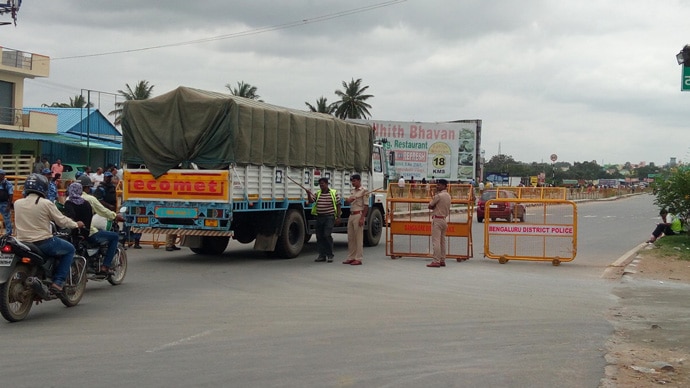 |
| Hosur border between Karnataka and Tamil Nadu. (Photo credit: Jugal R Purohit) |
After some thinking, we came upon a way out. By changing mere two characters on the number plate (from "KA" to "TN"), we became a Tamil Nadu registered vehicle!
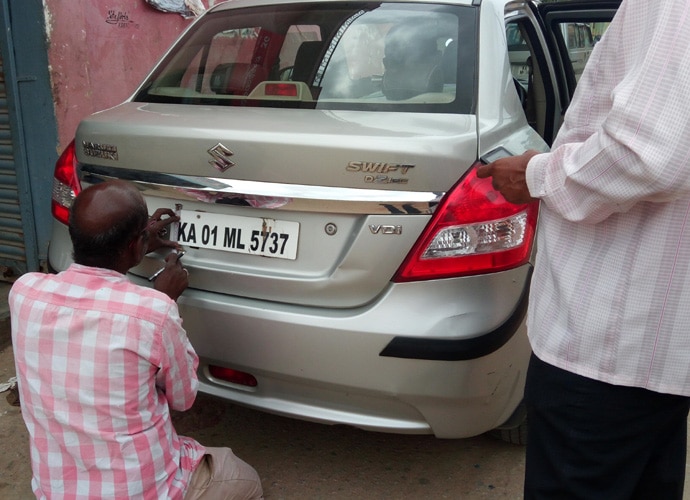 |
| With the Karnataka number plate. (Photo credit: Jugal R Purohit) |
A shopkeeper we found did it for us for a mere Rs 200. Much to our surprise, once we were done, a long queue had formed wanting the same.
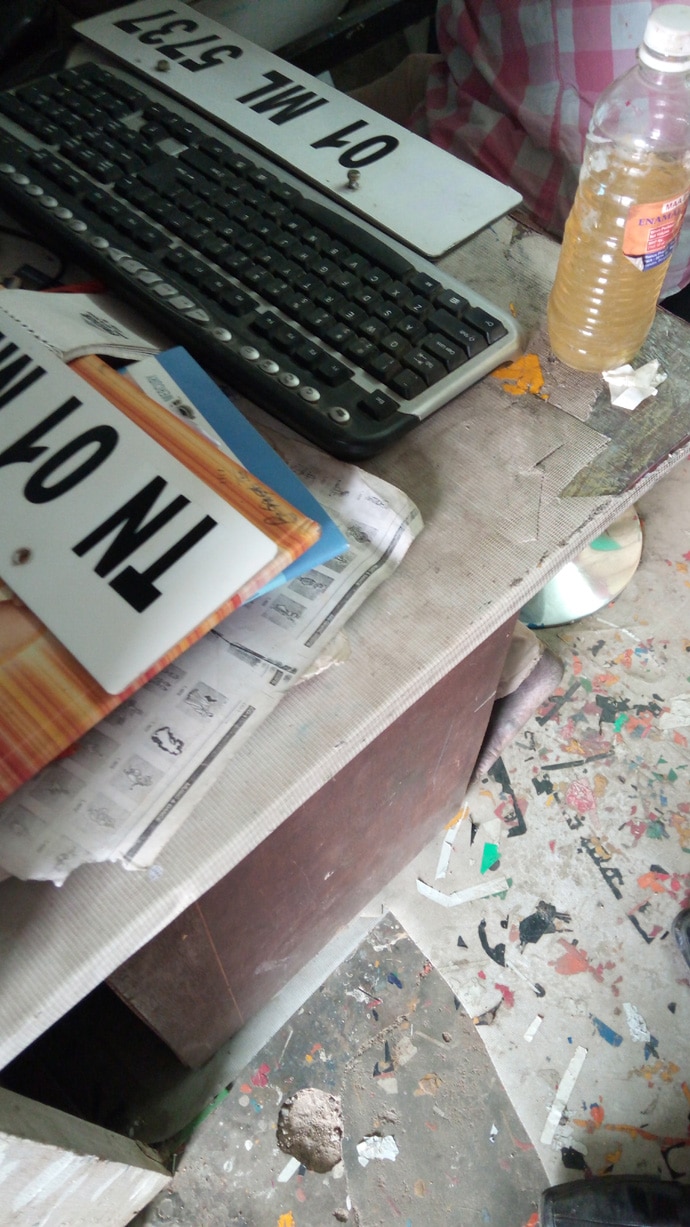 |
| With the duplicate number plate. (Photo credit: Jugal Purohit) |
By the time we completed our task and started our return journey to Bangalore, a day before the Tamil Nadu bandh, a reality check awaited us.
“I know this number plate is a fake one and that you are from Karnataka. Things are heating up, you better leave quickly,” advised a local resident.

